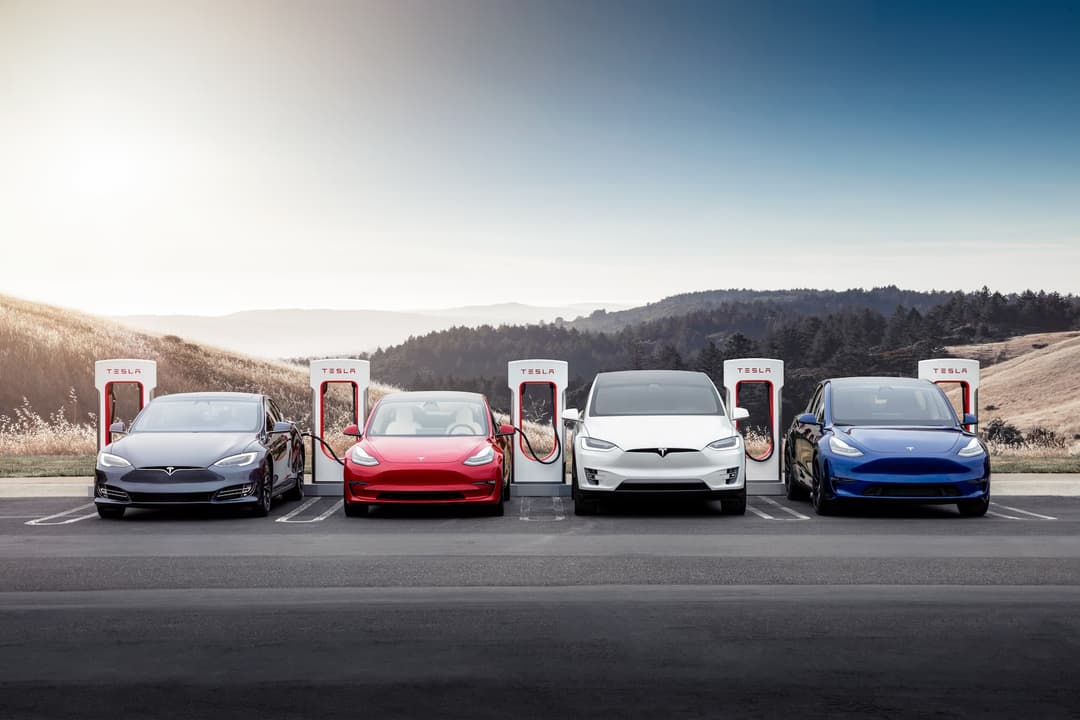
Tesla Supercharger stations are a network of high-speed DC charging stations designed specifically for Tesla vehicles. It is often identified as a key reason to buy a Tesla, despite the company opening some locations for all EV models.
Whether it's the popular Tesla Model 3 small sedan, Model Y medium SUV or the venerable Model S and Model X, Tesla EVs benefit from exclusive access to its own Level 3 fast DC Supercharging network worldwide.
In this article, we'll answer some commonly asked questions about Tesla Supercharger stations.
How many Tesla Supercharger stations are there in Australia?
As of March 2023, there are over 80 Tesla Supercharger stations in Australia, with plans for further expansion. These charging stations are strategically located along major highways and in popular tourist destinations for convenient access. onnecting major capital cities and towns from Perth, to Devenport and Gympie composed of either 120kW (V2) or 250kW (V3) fast-charging DC stalls.
At each site hub in Australia, there’s anywhere between three to 10 stalls available, so it can accommodate more Tesla EVs charging at the same time than any other public charging network right now.
This is an uncommon sight as most major charging providers like Chargefox and Evie Networks usually offer a cluster of one or two stalls at each location instead.
NOTE: Above map updated on May 19, 2022
How much does it cost to supercharge a Tesla at a Supercharger?
Rates for using Tesla Superchargers are generally more expensive than other charging networks. It now reportedly uses variable pricing depending on the time-of-day and demand, which could vary between $0.50 to $0.69 per kWh.
That’s compared to Chargefox and Evie Network’s standard rate of $0.45 per kWh on fast 50kW chargers or $0.60 per kWh on ultra-rapid 350kW chargers.
Charging a Tesla Model 3/Y from 10% to 80% would cost between $20 to $28.
Charging at home is the most convenient, cheapest and reliable way to top-up your Tesla.
How long does it take to charge a Tesla at a Supercharger?
Charging a Tesla Model 3/Y from 10% to 80% at a Tesla supercharger can be done in as little as 25 minutes, providing 320 to 340 km of range. It is recommended to limit the charging at rapid chargers to 80% to preserve battery health.
Note that the times shown are only a guide only. Other factors that might vary the actual charging time of your car. The estimates provided are for the RWD base variant of the Tesla Model 3/Y. For personalised estimates of the other variants use the zecar ev charging calculator.
Are Tesla Superchargers free in Australia?
Tesla Superchargers are no longer free in Australia. Early buyers of the Tesla Model X and Y in Australia received lifetime charging. These however are not transferrable to new owners. All new owners of the Tesla Model 3 small sedan, Model Y medium SUV will pay standard rates for use of the Superchargers.
Can Tesla Superchargers be used by other cars Australia?
Tesla has opened up select superchargers to non-Teslas in Australia. Locations can be viewed in the Tesla app. Tesla originally launched the non-Tesla Supercharger pilot program back in November 2021 as an effort to further accelerate the world's transition to sustainable energy.
Non-Tesla vehicles will be charged $0.79 per kWh for drivers of non-Tesla cars However, non-Tesla drivers can sign up to a $9.99/month subscription to reduce the cost to $0.66 per kWh.
Supercharging bottom line

Tesla Supercharger stations are an important part of the electric vehicle ecosystem, providing convenient and efficient charging solutions for Tesla owners on long-distance journeys. While charging at a Supercharger station is not completely free, the cost is relatively affordable and can be easily tracked through the Tesla app.
The supercharger network is also known to be more reliable, more convenient with ‘plug and charge’, seamlessly plans Supercharging stops (essentially eliminating 'range anxiety'), and the exclusive rights (mostly) allows Tesla owners to have the peace-of-mind to essentially access all available public chargers with a Type 2/CCS2 plug in the country.
Stay up to date with the latest EV news
- Get the latest news and update
- New EV model releases
- Get money savings-deal
